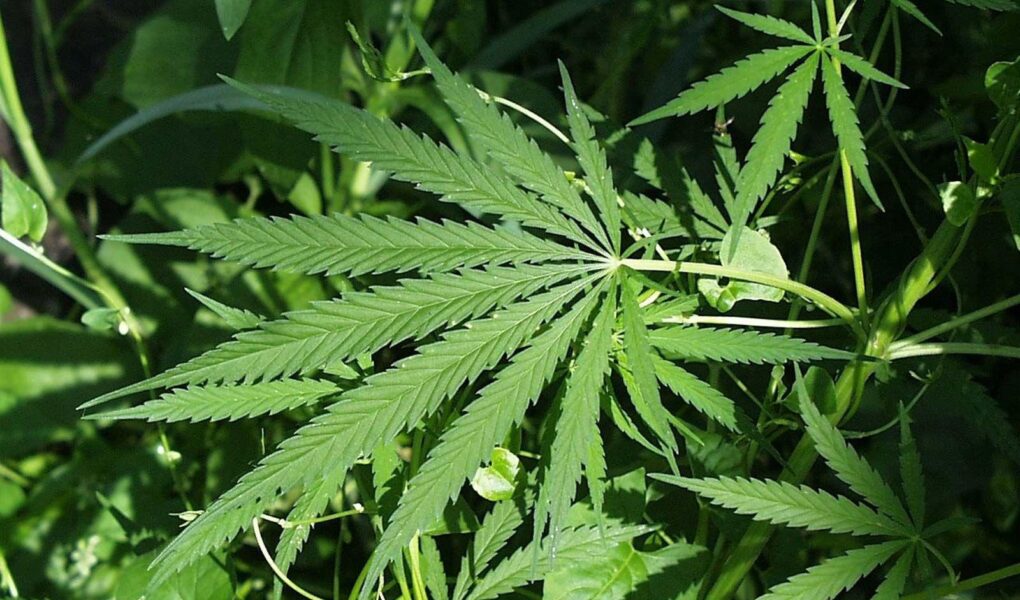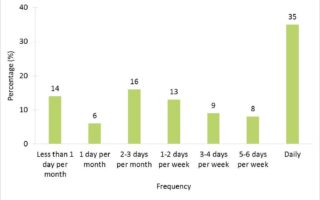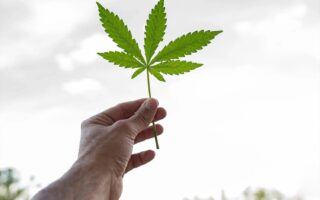In a world increasingly attuned to the wonders of nature, the hemp plant emerges as a subtle yet remarkable icon of versatility and resilience. With its intricate leaves unfurling like green lace and its tall, slender stalks reaching for the sky, hemp captivates our imagination, serving both aesthetic and practical purposes. The visual allure of hemp is often overshadowed by misconceptions, yet its profound beauty can be found in every stage of its growth, offering a canvas for photographers and nature enthusiasts alike. In this article, we will journey through the enchanting world of hemp plant pictures, exploring the various forms and settings that showcase this botanical marvel. From the delicate details of its foliage to the expansive fields that sway in the breeze, join us as we unravel the visual poetry of hemp and celebrate its role in both our ecosystems and our everyday lives.
Table of Contents
- Exploring the Rich Diversity of Hemp Plant Varieties
- Capturing the Beauty: Photography Tips for Stunning Hemp Imagery
- The Role of Hemp in Sustainable Practices and Its Visual Appeal
- Showcasing Hemp: Creative Uses for Your Hemp Plant Pictures
- Q&A
- Key Takeaways
Exploring the Rich Diversity of Hemp Plant Varieties
The hemp plant showcases a mesmerizing array of varieties, each distinguished by unique characteristics and applications. These varieties, often cultivated for specific uses, offer a deeper understanding of hemp’s versatility. Some prominent types include:
- Industrial Hemp: Primarily grown for fiber and seeds, ideal for textiles, paper, and biodegradable plastics.
- Hemp Seed Varieties: Sourced for their nutritional benefits, these seeds are rich in protein, healthy fats, and essential nutrients.
- Pharmaceutical Hemp: Cultivated for high CBD content, these plants are utilized in wellness products for their therapeutic properties.
- Fiber Hemp: Grown specifically for its strong stalks, perfect for construction materials and durable goods.
The growing interest in sustainable practices has led to an increase in hemp cultivation across the globe. Recognizing the potential of diverse hemp varieties, agronomists and entrepreneurs are exploring innovative growing techniques tailored for specific environmental conditions. Consider the following attributes when assessing different hemp strains:
| Hemp Variety | Primary Use | Key Benefits |
|---|---|---|
| Finola | Seeds and fiber | Short growing season, cold hardy |
| Hempflax | Fiber | High yield, excellent insulation properties |
| Lifter | CBD extraction | Rich in CBD, soothing effects |
| Cherry Wine | CBD oil | Aromatic, calming effects |
Capturing the Beauty: Photography Tips for Stunning Hemp Imagery
When photographing hemp plants, the key is to embrace the intricate details that make these plants unique. Lighting plays a pivotal role; early morning or late afternoon light provides a soft glow that enhances the texture of the leaves and flowers. Experiment with different angles to capture the plant’s natural grace. Consider using a macro lens to focus on the minute details, such as the fine hairs on the buds or the pattern of the leaves. This technique can transform ordinary shots into captivating works of art.
An effective composition can elevate your cannabis photography to new heights. Use the Rule of Thirds to create balance in your images, placing the hemp plant slightly off-center to draw the viewer’s eye. Incorporate elements of the hemp’s environment to add context; this could include soil textures or nearby flora. Additionally, don’t shy away from using props or filters to enhance color saturation and bring out the lush greens and earthy tones inherent to hemp. Below are a few tips to consider while capturing stunning hemp imagery:
- Focus on the details: Get close for intricate textures.
- Utilize natural light: Aim for golden hour for warm tones.
- Explore different backgrounds: Simple or textured, both can add depth.
- Experiment with angles: Capture from above, below, or at eye level.
The Role of Hemp in Sustainable Practices and Its Visual Appeal
The versatility of hemp extends far beyond its utilitarian benefits; it also plays a pivotal role in promoting sustainable practices that resonate with environmental consciousness. This hardy plant is known for its rapid growth and minimal resource requirements, making it an excellent candidate for eco-friendly agriculture. By using hemp in various industries, such as textiles, building materials, and biofuels, we can reduce our reliance on less sustainable resources. Furthermore, the cultivation of hemp contributes to soil health through its tendency to prevent erosion, rejuvenate degraded land, and even absorb heavy metals from the earth. This multifaceted approach positions hemp as a cornerstone in the movement towards sustainability.
Visually, the hemp plant itself is a testament to nature’s artistry. With its tall, slender stalks and delicate, serrated leaves, it creates a striking silhouette in any landscape, evoking a sense of tranquility and organic beauty. In addition to its aesthetic qualities, hemp’s visual diversity is evident in its rich green hues, which vary depending on environmental conditions and cultivation methods. To appreciate this further, consider the various products derived from hemp, each showcasing unique textures, colors, and designs, such as:
- Textiles: Soft, breathable fabrics with natural patterns
- Building materials: Innovative composites that visually resemble wood
- Paper products: Eco-friendly papers with a tactile, fibrous look
Incorporating hemp not only facilitates sustainable practices but also invites an aesthetic dimension into our lives that celebrates nature. Below is a table illustrating the key features of hemp products that contribute to both eco-friendliness and visual appeal:
| Product | Eco-Friendly Feature | Visual Appeal |
|---|---|---|
| Hemp Fabric | Biodegradable | Textured, earthy tones |
| Hempcrete | Energy-efficient | Natural stone-like appearance |
| Hemp Paper | Sustainable sourcing | Unique, fibrous surface |
Showcasing Hemp: Creative Uses for Your Hemp Plant Pictures
Transform your hemp plant pictures into a stunning visual narrative that celebrates this versatile plant. Whether you’re capturing the delicate fronds swaying in the breeze or the robust stalks ready for harvest, there are countless ways to highlight their beauty. Consider creating a photo series that tells a story of the growth process, from seedling to mature plant. You could also experiment with various angles and lighting to create an artistic interpretation of your hemp plants. Incorporating macro photography to focus on intricate details such as leaves and flowers can reveal the hidden beauty of hemp that many might overlook.
For those looking to share their passion with a wider audience, think about using your hemp plant pictures to craft engaging social media posts. Use vibrant images paired with informative captions that outline the many benefits of hemp, whether in construction, textiles, or sustainable living. Emphasize the eco-friendly aspect by creating a simple infographic that showcases the environmental advantages of hemp cultivation. Below is a quick overview of potential social media themes:
| Theme | Description |
|---|---|
| Health Benefits | Highlight the nutritional value of hemp seeds and oil. |
| Sustainable Farming | Illustrate the low-impact farming practices associated with hemp. |
| Diverse Applications | Showcase products made from hemp, from clothing to biofuels. |
Q&A
Q: What are hemp plants, and why are they photographed?
A: Hemp plants are versatile, tall, and slender plants that belong to the Cannabis sativa family. They are photographed for a variety of reasons, including their aesthetic appeal, the study of their agricultural practices, and the exploration of their numerous applications, from textiles to biofuels. Capturing their images can also help raise awareness about sustainability and the benefits of hemp cultivation.
Q: What do hemp plant pictures typically showcase?
A: Hemp plant pictures often highlight the distinct characteristics of the plant, including its lush green foliage, fibrous stalks, and flowering buds. They may also capture the plant at different growth stages, from seedlings to mature plants, and illustrate diverse growing environments, ranging from farms to greenhouses.
Q: Are there any specific features to look for in hemp plant photographs?
A: Yes! When examining hemp plant photographs, one should look for features such as the plant’s height, leaf shape, and color. A healthy hemp plant usually has serrated leaflets with a vibrant green hue. The characteristics of the flowers or buds can also indicate the hemp plant’s purpose—whether it’s for fiber, seeds, or CBD production.
Q: How can the photography of hemp plants contribute to environmental awareness?
A: The photography of hemp plants can spotlight the plant’s eco-friendly properties and its potential to combat issues like deforestation and pollution. By showcasing hemp’s growth and its role in crop rotation or soil regeneration, these images can educate the public about sustainable agricultural practices and encourage a shift toward environmentally-friendly materials.
Q: Are there any artistic qualities that can be captured in hemp plant photography?
A: Absolutely! Hemp plant photography can encompass a range of artistic styles, from macro shots that focus on the intricate textures of leaves and buds to wide-angle views that highlight the uniformity of a hemp field against a dramatic sky. The play of light and shadow, contrasting colors, and the use of creative compositions all contribute to the artistic quality of hemp plant pictures.
Q: Where can individuals find high-quality images of hemp plants?
A: Individuals can find high-quality images of hemp plants through various platforms, including stock photography websites, educational resources, and social media accounts dedicated to hemp cultivation. Additionally, local farms or enthusiasts often share stunning photographs that capture the essence of hemp growth in their natural settings.
Q: Can I use pictures of hemp plants for commercial purposes?
A: The use of hemp plant pictures for commercial purposes typically depends on copyright issues. It’s important to ensure that images are either royalty-free, licensed for commercial use, or that permission has been granted by the photographer. Reading the terms associated with any image before use is crucial to avoid legal complications.
Q: What impact does social media have on the visibility of hemp plant pictures?
A: Social media significantly boosts the visibility of hemp plant pictures by providing a platform for sharing and education. Hashtags such as #HempAwareness and #SustainableLiving allow users to connect with others interested in hemp, leading to increased discourse on its benefits and uses, thereby raising awareness about this multifaceted plant.
Key Takeaways
As we conclude our exploration of the diverse and captivating world of hemp plant pictures, it becomes clear that this remarkable plant is more than just a visual delight. From the intricate patterns of its leaves to the rustic beauty of its stalks, each image tells a story of sustainability, versatility, and potential. Whether you’re drawn to hemp for its eco-friendly attributes, its historical significance, or simply its aesthetic appeal, these pictures serve as a reminder of nature’s artistry and the promise that lies within this understated plant. As you continue your journey through the fields of imagery and innovation, let the hemp plant inspire you to appreciate the balance between art and nature, reminding us all that beauty can indeed thrive in many forms.



